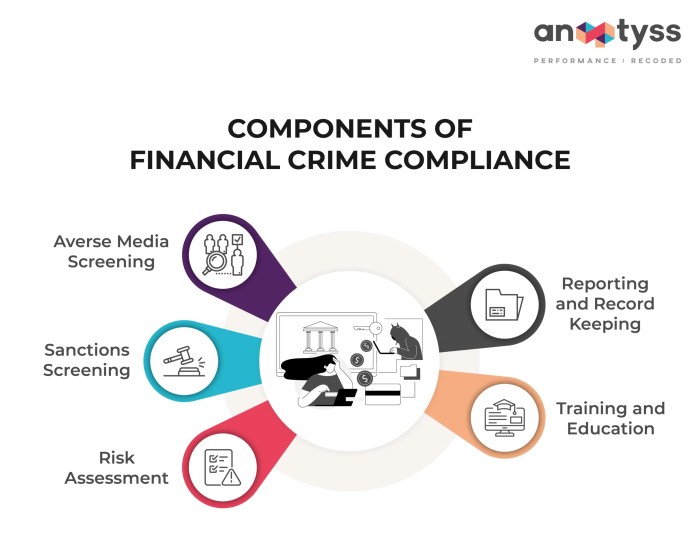Key Metrics Every Accountant Should Track are crucial for maintaining financial health, client satisfaction, and operational efficiency. This guide explores essential metrics across various aspects of accounting practice, from assessing financial ratios and client relationships to optimizing operational processes and ensuring tax compliance. Understanding and effectively utilizing these key performance indicators (KPIs) empowers accountants to make data-driven decisions, improve profitability, and mitigate risks.
We will delve into specific metrics within financial health, client relations, operational efficiency, tax compliance, internal controls, and technology utilization. Each section provides practical examples, calculations, and actionable strategies to enhance your accounting practice and provide valuable insights for improved performance and growth.
Financial Health Metrics
Understanding a company’s financial health is crucial for accountants, informing strategic decisions and ensuring long-term sustainability. Tracking key financial ratios provides a comprehensive overview of liquidity, solvency, and profitability, allowing for proactive risk management and informed financial planning. This section will explore several vital financial health metrics, their calculations, interpretations, and implications.
Key Financial Ratios and Their Significance
Financial ratios offer a standardized way to analyze a company’s performance and financial position. By comparing ratios over time and against industry benchmarks, accountants can identify trends, assess risks, and make data-driven recommendations. Three primary categories of ratios—liquidity, solvency, and profitability—provide a holistic view of a company’s financial health. Liquidity ratios measure a company’s ability to meet its short-term obligations, solvency ratios assess its ability to meet its long-term obligations, and profitability ratios indicate its ability to generate earnings.
Liquidity Ratios
Liquidity ratios assess a company’s ability to pay its short-term debts. A low liquidity ratio suggests potential difficulties in meeting immediate financial obligations. The most common liquidity ratio is the current ratio.
Current Ratio
The current ratio measures a company’s ability to pay its current liabilities (due within one year) with its current assets (assets that can be converted to cash within one year). A higher ratio generally indicates better liquidity.
Current Ratio = Current Assets / Current Liabilities
For example, a company with $100,000 in current assets and $50,000 in current liabilities has a current ratio of 2.0. This suggests a strong ability to meet short-term obligations. A ratio below 1.0 indicates that current liabilities exceed current assets, raising concerns about liquidity.
Solvency Ratios
Solvency ratios evaluate a company’s long-term financial stability and its ability to meet its long-term obligations. A low solvency ratio suggests a higher risk of financial distress. A key example is the debt-to-equity ratio.
Debt-to-Equity Ratio
The debt-to-equity ratio compares a company’s total debt to its shareholder equity. A higher ratio indicates a greater reliance on debt financing, which can increase financial risk.
Debt-to-Equity Ratio = Total Debt / Shareholder Equity
A company with $50,000 in total debt and $100,000 in shareholder equity has a debt-to-equity ratio of 0.5. This indicates a relatively low reliance on debt financing. A significantly higher ratio might signal increased financial risk.
Profitability Ratios, Key Metrics Every Accountant Should Track
Profitability ratios measure a company’s ability to generate profits from its operations. These ratios provide insights into the efficiency and effectiveness of a company’s operations. Return on assets (ROA) is a widely used profitability ratio.
Return on Assets (ROA)
ROA measures how efficiently a company uses its assets to generate profit. A higher ROA indicates better asset utilization and profitability.
Return on Assets (ROA) = Net Income / Total Assets
If a company has a net income of $20,000 and total assets of $100,000, its ROA is 20%. This suggests that the company is generating 20 cents of profit for every dollar of assets.
Interpreting Financial Ratios and Identifying Potential Risks
Interpreting financial ratios requires a holistic approach, considering industry benchmarks, historical trends, and the company’s specific circumstances. Significant deviations from industry averages or historical trends warrant further investigation. For example, a consistently declining current ratio might indicate deteriorating liquidity, while a rising debt-to-equity ratio might signal increasing financial risk. Analyzing ratios in conjunction with other financial statements and qualitative factors provides a more comprehensive understanding of a company’s financial health.
Key Financial Health Metrics Summary
| Metric | Formula | Interpretation | Potential Risk Indicators |
|---|---|---|---|
| Current Ratio | Current Assets / Current Liabilities | Measures short-term liquidity; higher is better. | Ratio consistently below 1.0 |
| Debt-to-Equity Ratio | Total Debt / Shareholder Equity | Measures reliance on debt financing; lower is generally better. | High and increasing ratio |
| Return on Assets (ROA) | Net Income / Total Assets | Measures profitability relative to assets; higher is better. | Declining ROA over time |
| Gross Profit Margin | (Revenue – Cost of Goods Sold) / Revenue | Measures profitability after deducting direct costs. | Falling margin despite rising revenue |
| Net Profit Margin | Net Income / Revenue | Measures overall profitability after all expenses. | Consistently low margin |
Client-Related Metrics
Understanding your client base is crucial for the long-term health of your accounting practice. Tracking key metrics related to client acquisition, retention, and satisfaction provides invaluable insights into your firm’s performance and allows for proactive adjustments to improve profitability and sustainability. These metrics offer a clear picture of your client lifecycle, revealing areas of strength and areas needing improvement.
Client-related metrics go beyond simply tracking revenue; they delve into the quality of your client relationships and the efficiency of your client acquisition strategies. By monitoring these metrics, accountants can make data-driven decisions to enhance client loyalty, boost revenue streams, and ultimately build a thriving practice.
Client Acquisition Cost (CAC)
Calculating Client Acquisition Cost (CAC) helps determine the effectiveness of your marketing and sales efforts. It represents the total cost of acquiring a new client, encompassing all expenses related to marketing, sales, and onboarding. A low CAC indicates efficient acquisition strategies, while a high CAC may signal the need for optimization. The formula for CAC is:
Total Marketing and Sales Costs / Number of New Clients Acquired
. For example, if you spent $10,000 on marketing and acquired 50 new clients, your CAC would be $200 per client. Analyzing CAC over time allows you to assess the return on investment (ROI) of different acquisition channels and refine your approach.
Client Churn Rate
Client churn rate measures the percentage of clients lost over a specific period. A high churn rate indicates potential problems with service delivery, client satisfaction, or pricing. The formula is:
(Number of Clients Lost / Number of Clients at the Beginning of the Period) x 100%
. For instance, if you started with 100 clients and lost 10, your churn rate is 10%. Regularly monitoring churn allows for early identification of at-risk clients and enables proactive intervention to improve retention.
Average Revenue Per Client (ARPC)
Average Revenue Per Client (ARPC) reflects the average revenue generated per client over a given period. Tracking ARPC helps assess the profitability of your client base and identify opportunities for upselling or cross-selling services. The calculation is straightforward:
Total Revenue / Number of Clients
. If your total revenue is $500,000 and you have 250 clients, your ARPC is $2,000. An increasing ARPC signifies successful efforts in enhancing service offerings and client value.
Client Lifetime Value (CLTV)
Client Lifetime Value (CLTV) represents the total revenue expected from a single client throughout their relationship with your firm. A high CLTV demonstrates strong client retention and profitable client relationships. Estimating CLTV involves considering factors such as average revenue per client, client churn rate, and the average client lifespan. For example, a client with an ARPC of $2,000, a churn rate of 5%, and an average lifespan of 5 years would have a CLTV of approximately $8,000. Focusing on increasing CLTV is a key strategy for long-term financial success.
Improving Client Communication and Building Stronger Relationships
Effective communication is paramount for client retention and satisfaction. Building strong relationships requires consistent effort and a proactive approach.
- Regular check-ins: Schedule routine meetings or calls to discuss client progress and address any concerns.
- Personalized communication: Tailor your communication to each client’s specific needs and preferences.
- Proactive problem-solving: Anticipate potential issues and offer solutions before they escalate.
- Feedback mechanisms: Implement systems for gathering client feedback and using it to improve services.
- Value-added services: Offer additional services or resources to demonstrate your commitment to client success.
Operational Efficiency Metrics
Tracking operational efficiency is crucial for accounting firms to ensure profitability and client satisfaction. Inefficient processes lead to increased costs, delayed reporting, and potentially errors, impacting both the bottom line and client relationships. By carefully measuring and improving operational efficiency, accounting firms can free up resources, enhance accuracy, and ultimately deliver better service.
Measuring operational efficiency involves analyzing key aspects of accounting workflows. This includes evaluating the time taken to complete tasks, the accuracy of those tasks, and the overall resource consumption. Identifying bottlenecks and areas for improvement is critical for optimizing processes and maximizing efficiency.
Notice What is a Balance Sheet? Simple Explanation for recommendations and other broad suggestions.
Invoice Processing Time and Error Rates
Measuring invoice processing time is straightforward. Start by timing the process from the moment an invoice is received to when it’s entered into the accounting system and approved for payment. This includes data entry, verification, and approval steps. Tracking this time for a sample of invoices over a period, perhaps a month, allows for the calculation of an average processing time. Error rates are similarly measured by tracking the number of invoices with errors (e.g., incorrect amounts, missing information) divided by the total number of invoices processed, expressed as a percentage. Reducing both processing time and error rates are key targets for efficiency improvements.
Approaches to Tracking and Improving Operational Efficiency
Several approaches exist for tracking and improving operational efficiency. Regularly reviewing key performance indicators (KPIs) like invoice processing time and error rates provides a baseline for improvement. Benchmarking against industry averages or competitors can identify areas where improvements are needed. Process mapping, a visual representation of the steps involved in a task, helps to pinpoint bottlenecks and inefficiencies. Implementing Lean methodologies, focusing on eliminating waste and improving workflow, can further enhance efficiency. Finally, regular staff training and the use of appropriate technology are also essential for optimizing processes.
Utilizing Technology for Automation and Streamlining
Technology plays a significant role in automating tasks and streamlining workflows. Accounting software packages automate data entry, reconciliation, and report generation. Optical character recognition (OCR) software can automatically extract data from invoices and other documents, significantly reducing manual data entry. Workflow automation tools can streamline approval processes and reduce delays. Cloud-based solutions enhance collaboration and access to information, further improving efficiency. For example, using cloud-based accounting software allows team members to access and update information in real-time, eliminating delays caused by manual file sharing.
Comparison of Manual vs. Automated Processes
| Task | Manual Process | Automated Process | Time Savings |
|---|---|---|---|
| Invoice Processing | Manual data entry, verification, and approval; average 15 minutes per invoice. | Automated data entry via OCR, automated verification rules, and automated approval workflows; average 2 minutes per invoice. | 13 minutes per invoice (87% reduction) |
| Bank Reconciliation | Manual comparison of bank statements with accounting records; average 2 hours per month. | Automated matching of transactions; average 30 minutes per month. | 1.5 hours per month (75% reduction) |
| Report Generation | Manual data extraction and report creation in spreadsheets; average 4 hours per report. | Automated report generation from accounting software; average 30 minutes per report. | 3.5 hours per report (92% reduction) |
Tax Compliance Metrics: Key Metrics Every Accountant Should Track
Maintaining meticulous tax compliance is paramount for accountants, not only for legal reasons but also to project professionalism and build client trust. Effective tracking of tax-related metrics allows for proactive management, minimizes risks, and contributes to a smoothly functioning practice. This section will Artikel key metrics and strategies for optimal tax compliance.
Tracking Key Deadlines for Tax Filings and Payments
Staying organized and informed about tax deadlines is crucial. A robust system, whether a digital calendar, spreadsheet, or dedicated tax software, should be implemented to record all relevant deadlines. This system should include not only the due dates for federal and state taxes but also any extensions granted and any deadlines related to specific clients or tax forms. Regularly reviewing and updating this system is essential to avoid penalties for late filings or payments. For example, a quarterly tax payment for estimated taxes is due on April 15th, June 15th, September 15th, and January 15th, with specific due dates varying based on the filing status and payment method. Missing even one of these deadlines can result in penalties.
Essential Documents for Tax Preparation
A comprehensive checklist of necessary documents is vital for efficient and accurate tax preparation. This checklist should be tailored to the specific needs of each client, but generally includes: W-2 forms (Wage and Tax Statement), 1099 forms (for independent contractors and other miscellaneous income), receipts for charitable donations, records of business expenses (if applicable), mortgage interest statements, and investment records. Maintaining a well-organized filing system, either physical or digital, ensures easy access to these documents when needed, streamlining the tax preparation process and reducing the risk of errors.
Strategies for Minimizing Tax Liabilities While Remaining Compliant
Minimizing tax liabilities legally and ethically involves proactive planning and strategic decision-making. This includes taking advantage of all available deductions and credits, such as those for charitable contributions, education expenses, or home mortgage interest. Properly structuring business transactions and utilizing tax-advantaged investment vehicles can also significantly reduce tax burdens. However, it is crucial to remember that tax minimization should always be within the bounds of the law. Aggressive tax avoidance strategies can lead to severe penalties and legal repercussions. For instance, accurately claiming the home office deduction requires careful documentation of space usage and expenses.
Common Tax Compliance Errors and How to Avoid Them
Several common errors can lead to significant tax problems. A proactive approach to identifying and preventing these errors is vital.
- Inaccurate Reporting of Income: Carefully review all income sources and ensure accurate reporting of all amounts received. Double-checking all forms (W-2, 1099, etc.) for accuracy is critical.
- Missing Deductions or Credits: Thoroughly review all eligible deductions and credits and ensure complete documentation is available to support them.
- Incorrect Filing Status: Verify the correct filing status (single, married filing jointly, etc.) to ensure accurate calculation of tax liability.
- Errors in Calculation: Use tax software or double-check calculations manually to minimize mathematical errors.
- Late Filing or Payment: Maintain a meticulous calendar of deadlines and ensure timely filing and payment of all taxes.
Internal Control Metrics
Robust internal controls are the bedrock of any financially sound organization. They safeguard assets, ensure the reliability of financial reporting, and promote operational efficiency. Without a strong internal control framework, businesses are vulnerable to fraud, errors, and regulatory non-compliance, potentially leading to significant financial losses and reputational damage. Monitoring key internal control metrics allows accountants to proactively identify weaknesses and implement corrective measures.
Importance of Internal Controls in Preventing Fraud and Ensuring Accurate Financial Reporting
Effective internal controls act as a crucial deterrent against fraudulent activities. By establishing clear authorization procedures, segregation of duties, and regular reconciliations, companies minimize opportunities for embezzlement, misappropriation of assets, and financial statement manipulation. Furthermore, strong internal controls ensure that financial reporting is accurate, reliable, and compliant with relevant accounting standards. This enhances the credibility of the financial information used by investors, creditors, and other stakeholders in making informed decisions. The absence of robust controls increases the risk of material misstatements, leading to potential legal repercussions and financial penalties.
Key Internal Control Procedures to be Implemented and Monitored
Several key internal control procedures are vital for maintaining financial integrity. These include: authorization of transactions, segregation of duties (preventing a single person from having control over all aspects of a transaction), independent verification (reconciliations and audits), physical safeguards (secure storage of assets), and documentation (maintaining a detailed audit trail). Monitoring these procedures involves regular reviews, testing, and updates to ensure their effectiveness. For instance, regular reconciliations of bank statements and general ledger accounts are crucial for detecting discrepancies and potential errors. Similarly, periodic reviews of access controls for sensitive systems can help prevent unauthorized access and data breaches.
Examples of Common Internal Control Weaknesses and How to Address Them
Common internal control weaknesses often stem from inadequate segregation of duties, lack of proper authorization procedures, insufficient documentation, or infrequent reconciliations. For example, if one person is responsible for both receiving payments and recording them in the accounting system, the risk of fraud increases significantly. This weakness can be addressed by assigning these tasks to different individuals. Another common weakness is the lack of regular review of bank reconciliations. This can be remedied by establishing a schedule for timely reconciliations and follow-up on any discrepancies identified. Finally, poor documentation practices can hinder the audit trail, making it difficult to trace transactions and identify errors. Implementing a robust documentation system with clear procedures and regular reviews can address this issue.
Flowchart Illustrating a Strong Internal Control Process for Accounts Payable
[Description of Flowchart:] The flowchart depicts a robust accounts payable process. It begins with the receipt of an invoice, which is then reviewed for accuracy and completeness by a designated individual (Invoice Verification). The invoice is then entered into the accounting system by a separate individual (Data Entry). A third individual (Approver) then authorizes the payment after reviewing the invoice and supporting documentation. The authorized invoice is then sent to the payment processing department (Payment Processing) where checks are prepared and mailed. Finally, the payment is recorded in the accounting system, and the invoice is filed. Reconciliations of vendor statements with the accounts payable ledger are performed regularly (Reconciliation) by an independent individual to detect and correct any discrepancies. This segregation of duties and the multiple layers of review significantly reduce the risk of errors and fraud in the accounts payable process.
Technology & Automation Metrics
The increasing availability and affordability of accounting software and automation tools have revolutionized the accounting profession. Efficiently leveraging these technologies is no longer optional; it’s crucial for maintaining competitiveness and profitability. Tracking key metrics related to technology adoption and utilization allows accountants to identify areas for improvement and maximize the return on their technology investments.
Accounting Software’s Impact on Efficiency and Accuracy
The adoption of accounting software significantly enhances both efficiency and accuracy in accounting processes. Manual data entry is minimized, reducing the risk of human error and freeing up time for more strategic tasks like financial analysis and client consultation. Software features like automated invoice processing, bank reconciliation, and reporting functionalities streamline workflows, leading to faster turnaround times and improved overall productivity. Real-time data access allows for quicker decision-making and proactive problem-solving, enhancing the overall quality of accounting services. For example, a firm switching from manual spreadsheets to cloud-based accounting software might experience a 30% reduction in processing time for monthly financial statements, freeing up valuable staff time.
Metrics for Evaluating Accounting Software and Automation Tools
Several key metrics can be used to assess the effectiveness of accounting software and automation tools. These include:
* Time saved: This measures the reduction in time spent on specific tasks after implementing the software. For instance, tracking the time taken for bank reconciliation before and after automation provides a clear indication of efficiency gains.
* Error rate: This metric quantifies the reduction in errors related to data entry, calculations, and reporting. A lower error rate directly translates to improved data quality and reduced costs associated with error correction.
* Processing speed: This evaluates how quickly the software processes transactions and generates reports. Faster processing times contribute to improved efficiency and faster client turnaround.
* User adoption rate: This metric tracks the percentage of staff successfully using and benefiting from the new software. High adoption rates indicate effective training and user-friendliness of the software.
* Return on Investment (ROI): This crucial metric assesses the financial benefits of the software investment, considering factors like cost savings, increased efficiency, and improved revenue generation. A positive ROI demonstrates the software’s value.
Technology’s Impact on Data Analysis and Reporting
Technology significantly enhances data analysis and reporting capabilities. Accounting software often incorporates advanced features like data visualization tools, allowing for the creation of insightful dashboards and reports. These tools enable accountants to identify trends, anomalies, and potential risks more quickly and efficiently than through manual analysis. For example, real-time dashboards can provide immediate insights into key financial metrics, enabling proactive decision-making and improved financial management. Furthermore, the ability to easily export data to other analytical tools facilitates more in-depth analysis and predictive modeling.
Comparison of Accounting Software Options
The following table compares the features and benefits of three popular accounting software options. Note that specific features and pricing may vary depending on the chosen plan and version.
| Software | Key Features | Benefits | Pricing (Example) |
|---|---|---|---|
| Xero | Cloud-based, invoicing, expense tracking, bank reconciliation, reporting | Real-time data, accessibility from anywhere, automated workflows | $20-$70+/month |
| QuickBooks Online | Cloud-based, invoicing, expense tracking, payroll, inventory management | Scalable solution, robust features, strong customer support | $25-$180+/month |
| Sage 50cloud | Cloud-based and desktop options, invoicing, inventory management, job costing | Hybrid approach, suitable for various business sizes, comprehensive features | $30-$150+/month |
Pricing is an example and can vary based on the specific plan and features selected. Consult each software’s pricing page for current information.
End of Discussion
Mastering the art of tracking key metrics is not just about numbers; it’s about gaining a comprehensive understanding of your accounting practice’s performance. By diligently monitoring financial health, client relationships, operational efficiency, and compliance, accountants can proactively identify areas for improvement, optimize resource allocation, and ultimately drive sustainable growth. This data-driven approach transforms accounting from a purely transactional function into a strategic partner in business success.
Question Bank
What software is best for tracking these metrics?
The best software depends on your specific needs and budget. Popular options include Xero, QuickBooks Online, and Zoho Books, each offering varying features and integrations.
How often should I review these metrics?
Regular review is key. Aim for at least a monthly review of key financial and operational metrics, with more frequent checks (weekly or daily) for critical indicators like cash flow.
How can I improve client communication based on these metrics?
Analyze client satisfaction scores and feedback to identify areas for improvement. Proactive communication, personalized service, and regular updates based on their specific needs can strengthen relationships.









